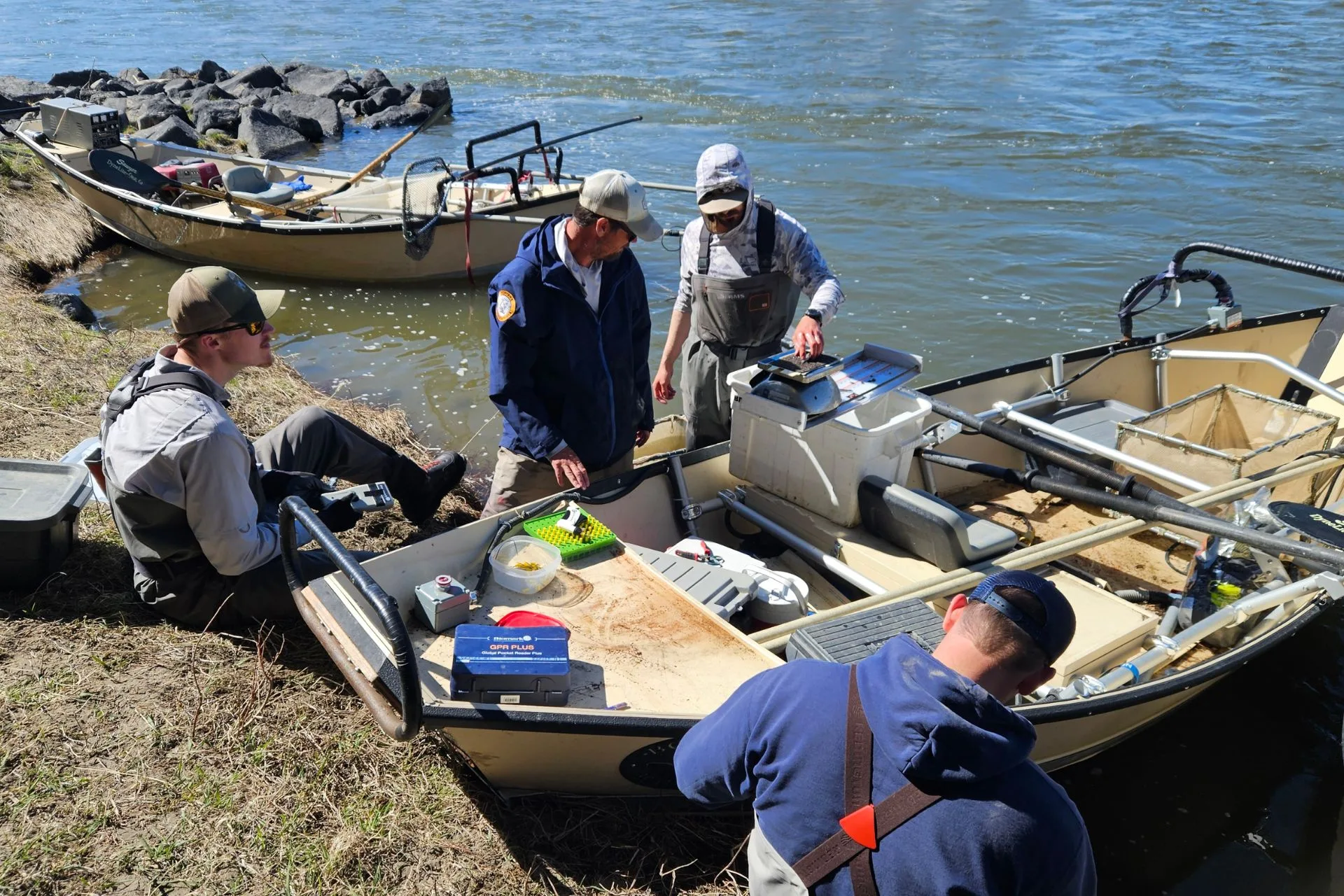BRETT FRENCH | bfrench@billingsgazette.com
In 2024 the peak flow on the Shields River in Park County was on Sept. 19 — not during spring runoff — following a heavy fall rainstorm that boosted flows to 1,300 cubic feet per second.
Two days earlier, the stream was trickling along at about 40 cfs.
The spike caught Scott Opitz’s attention. The 21-year veteran Fish, Wildlife & Parks fisheries biologist based in Livingston is seeing other unusual occurrences on the streams in his area, the biggest of which is the Yellowstone River.
Opitz works on a section of the state’s longest free-flowing stream — from the Yellowstone National Park border downstream to Big Timber, a 90-mile stretch that sees the river transition from the mountains to foothills terrain.
Popular with recreational boaters and anglers, the Yellowstone has seen a substantial increase in use during Opitz’s tenure as crowded boat ramps have sometimes become battlegrounds between fishermen frustrated over launching etiquette.
More high water
The Shields River, which saw the fall bump in flows, is one of many tributaries to the upper Yellowstone. The mainstem stream is also seeing notable changes based on flow records gathered at Livingston going back to the late 1800s.
June 2022 is the highest spike on the chart. That’s when 55,200 cfs swept past the windy southwestern Montana town, the most ever recorded.
A basketball is about 1 cubic foot. So imagine 55,200 basketballs flowing past Livingston every second to get an idea of how much water was churning downstream.
That was considered, by the U.S. Geological Survey, as a one in 500-year flood — meaning the chances of that much water rolling downstream is less than .2% in any given year. The flood caused extensive damage to bridges, homes and roads across portions of southwestern and south-central Montana.
But there have been other big flows in recent years, and the high waters are coming more often. In 2011 — an unusually wet year statewide that left much of northeastern Montana under water and prompted the opening of floodgates on Fort Peck Reservoir — saw the Yellowstone peak at 40,600 cfs. In 1996 and 1997, there were unusual back-to-back high water years — 37,100 cfs and 38,000 cfs, respectively.
The water gauges are evidence that spring snowmelt is coming off more quickly as warmer temperatures arrive earlier in the mountains in springtime compared to 100 or even 50 years ago. The historic 2022 flood was caused by a mountain rainstorm that fell on snow.
“Peak flows are also about two weeks earlier than in the 1980s,” Opitz said.
Low spring flows
Changes in river dynamics have also curtailed FWP’s ability to launch its jet boats for fish counts on the Yellowstone. Historically, Opitz said, a flow of 2,000 cfs was enough to ensure the boats could skim over shallow areas. Now the crews need 3,300 cfs or more.
“Our windows used to be really big to do sampling,” Opitz said. “Now they’re really short.”
In the past, the spring surveys would capture and mark fish one day. Then go out a different day and capture fish again to develop an estimate of fish populations.
On some sections of the river, the crews are now using drift boats and installing PIT tags to come up with population estimates. PIT tags, Passive Integrated Transponders, are like the microchips some people have implanted in their pets. Installing them, however, is invasive, requiring them to be inserted with a needle or small incision.
Trout populations fluctuate
The population assessments have revealed brown trout numbers are declining in the Yellowstone River, but not as drastically as Montana streams to the west like the Big Hole and Madison.
Like those western streams, Opitz blames the decline on lower stream flows and higher water temperatures.
Evidence of the higher water temperatures came in 2007, the first time there was a fishing restriction on the upper Yellowstone. That occurred when the water temp surpassed 70 degrees near Springdale, which is between Livingston and Big Timber. Prolonged water temps above 70 degrees kills trout.
“Now we’re starting to see it move upriver,” Opitz said. “It’s hitting 70 degrees fairly regularly at the gauge in Livingston. Prior to 2007, I never saw it get close to that.”
Looking at historical data, he found the peak water temperature in the 1960s was 65 degrees in the hot days and low flows of late summer. Now the water is that warm in June.
Parasite bloom killed fish
It was 2016 when an outbreak of disease on the Yellowstone resulted in a stunning fish die-off — mostly whitefish — that was estimated in the tens of thousands. In the wake of the incident, the state closed off a 180-mile stretch of the river to all recreation.
The cause of the event was blamed on proliferative kidney disease, or PKD. The infection, caused by a microscopic parasite that’s always present, seemed to have been heightened by low stream flows and warm water temperatures.
The 2022 flood may have helped reduce the number of secondary hosts for the parasite, but that doesn’t mean PKD won’t come back, Opitz said.
Although the whitefish population nosedived after the outbreak, he said the fish seems to have stabilized and there are even some larger whitefish — 20- to 22-inches long — now inhabiting the river.
Strong year-class of trout
Opitz and his crew have also seen a strong class of 2-year-old rainbow and brown trout following the 2022 flood.
“Fish are so good at finding those margins and getting out of the way of those bigger events,” he said. “Some of what saved us is the flood was fairly short lived. It wasn’t days of high water.”
The scouring effects of such a big flood also cleans out spawning gravels, making them more productive.
Unfortunately, native Yellowstone cutthroat trout continue to struggle.
“They’re not at a record low, but they’ve been hanging there for a decade,” Opitz said.
FWP courtesy photo: A Montana Fish, Wildlife & Parks crew samples fish at the Mill Creek bridge section on the Yellowstone River in 2024. Changes to the river have relegated the sampling to drift boats rather than jet boats.




